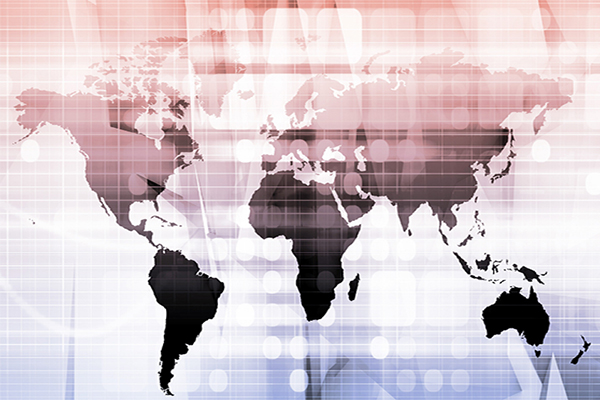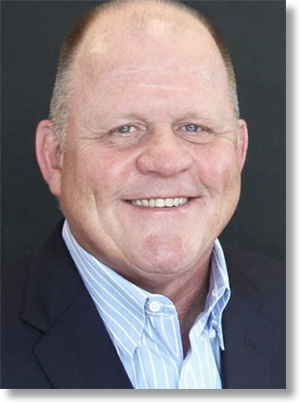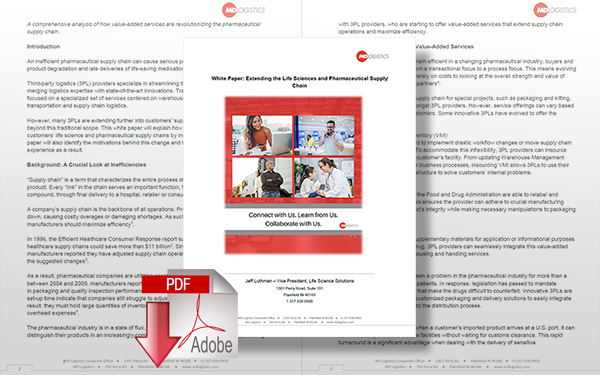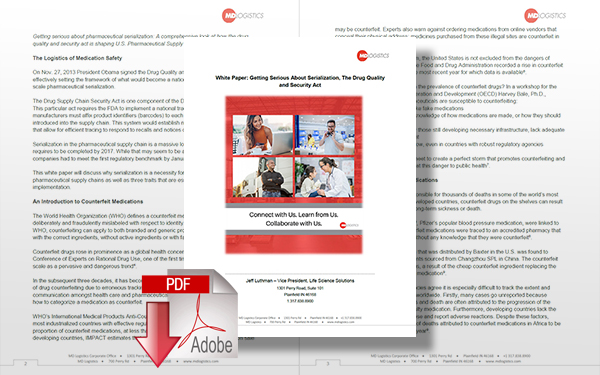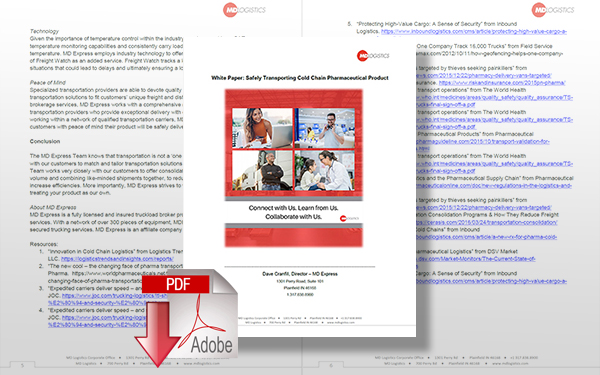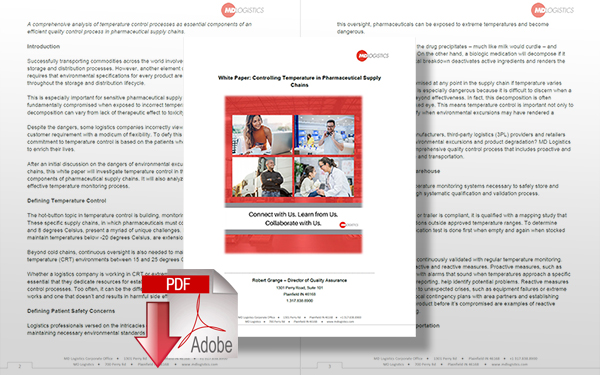Supply Chain Re-Engineering: How Does The Supply Chain Move On From A Global Pandemic?

The early days of the pandemic, forever altered the way in which supply chains operate, now, a year later, logistics professionals around the world are making changes to their business plans, re-engineering their global supply chain to ensure future interruptions won’t result in stock-outs of critical product, moving forward.
Supply Chain Re-Engineering
The advent of a global economy transformed the way we purchase goods. This meant that items could be both sourced and manufactured around the world, requiring an interconnected global supply chain to keep the constant flow of goods, moving from continent to continent and customer to consumer. A year ago this month, the supply chain’s around the world halted as the COVID-19 pandemic stretched to all corners of the globe, resulting in delays and out of stocks of critical health and consumer goods.
The early days of the pandemic, forever altered the way in which supply chains operate. Now, a year later, logistics professionals around the world are making changes to their business plans, re-engineering their global supply chain to ensure future interruptions won’t result in stock-outs of critical products, moving forward. Before you begin re-engineering, you have to ask yourself, what do I want my supply chain to look like, and realistically how can I achieve that?
Items to Consider
There are many different facets to consider when re-engineering your supply chain to be able to better respond to both changing consumer demand and external events. To rethink your supply chain is to rethink the purchase of your items and your access to the desired market. If you are tasked with ‘re-engineering’ your companies global supply chain, consider these critical areas.
Consumer Demand
Consumer demand plays a major role in the development of a supply chain. Not surprisingly, consumers' ever-evolving shopping behaviors not only dictate which goods are manufactured and brought to market but also the vehicles in which those items are delivered. Over the years, we have seen seasonal trends, current events and new technologies heavily influence the way in which consumers shop and in turn what they have come to expect.
We all saw how the COVID-19 pandemic greatly accelerated the direct-to-consumer phenomenon with the widespread adoption of omnichannel fulfillment capabilities as consumers moved to remote offices and learning environments. We also witnessed how these drastic, overnight shifts in demand created stock-outs of many items. One of the most famously being, toilet paper.
Moving forward, you must ask yourself what does your consumer demand looks like? Omnichannel and direct-to-consumer movements are permanently here to stay, no matter what industry you operate in. Even though many consumers may return to physical stores, the way that they shop has forever changed.
Now, the products you sell dictate the channel in which your consumer uses to shop. Does the consumer feel the need to physically look at your product before committing to a purchase? Or are you selling routine items your consumer might prefer to purchase from the comfort of their own homes? Understanding what your product is and how people will view it will not only dictate where it is sold, but how it moves through the supply chain. Planning for this expectation from consumers into not only your supply chain but also your delivery strategy will ensure they are repeat customers. Building a supply chain strategy for the future that is both agile and transparent will ensure future consumer demand can be met regardless of the delivery channel and your supply chain will be strong enough to handle disruptions and shifts from outside forces.
Population Shifts
As consumers move and populations shift, so too do the demand for products. We will continue to see populations shift and move out from densely populated, urban areas to suburban or rural settings. The COVID-19 pandemic helped facilitate this move as more and more consumers stayed home. Now a year later, understanding your consumer and their location will help you to better understand, geographically, where your product should be in order to make it into the hands of the consumer as quickly as possible. For several years, pre-pandemic, we noticed a trend where our customers were asking for one centrally located distribution center to house their product.
Pandemic induced moves towards direct to consumer fulfillment have more and more companies moving from one centrally located DC to multiple DC’s, closer to their consumers. Understanding where your consumer is will help you to understand where your product should be both manufactured and stored in order to have the most efficient and best customer delivery experience. What might have worked prior to the pandemic, might not work moving forward, especially as consumer preferences and expectations for quick delivery continue to evolve.
Data & Available Information
Forecasting is an integral part of any supply chain, no matter the industry. Having access to quick, reliable data is paramount in ensuring consumer-led demand is met. In today’s environment, it is almost a necessity to have modern, highly technical tools in your forecasting arsenal. Artificial Intelligence is one such tool that uses previous events to better predict future demand, quickly and react to that change in demand. Being able to use technology to run different scenarios which have the potential to disrupt the smooth flow of your supply chain will help you to better prepare for the future. Understanding and preparing for future demand is the key to preventing stock-outs of your critical product.
The Future Supply Chain
If 2020 has taught us anything, it is to expect the unexpected. It also taught us to listen to the short-term phenomenon when planning for the bigger picture. To build a successful supply chain, moving forward, it is important to implement long-term, forward-thinking with a clear view of the future. Ask yourself, “what will the supply chain look like in 5 years? 10 years?”. It is also important to learn from the past and apply previous experiences to your supply chain moving forward. The COVID pandemic transformed the way that every supply chain operates, in one way or another. Use those lessons to build resiliencies and contingencies into your future supply chain!
Conclusion
As a third-party logistics provider, the supply chain is our expertise. Our customers look to our experience in the industry to suggest and bring forth service offerings to keep their supply chains nimble and moving forward. The past year has brought its share of challenges, but it also brought lessons learned. As a third-party logistics provider (3PL), we have seen the changes transforming the industries in which we operate and have made adaptations to our business in order to better respond to our customers' evolving supply chains. As our customer has had to make changes to their global supply chain in response to the pandemic, we have been there, advising them on best practices and developing unique solutions to meet their developing business needs.
Our customers operating within the retail and consumer goods and life sciences and pharmaceuticals industries have seen a major shift to direct to consumer fulfillment. We too have made changes within our own business practices to respond. Now that many consumers are spending more time in their homes, shopping via ecommerce, our retail and consumer goods customers need us to respond quickly to the influx of orders, with the same level of service they have come to expect from us. Additional investments in autonomous technology and predictive metrics have and will allow us to continue to be successful moving forward, both in the interim and in the distant future.
Our life sciences and pharmaceuticals customers have expressed a need for additional temperature-controlled storage. As a result of the pandemic, the need for contingency cGMP storage environments has increased. It is this demand that has led us to the current expansion of our 2-8°C cooler. This expansion will help us to fulfill our customers increased capacity demand, in addition to better serve the industry as a whole. As this demand continues, we will continue to assess our network footprint in order to best serve the needs of our customer and their patients.
As your global supply chain evolves in response to the COVID-19 pandemic, collaborate with us, connect with us and tell us about your supply chain needs.
Related White Papers
Extending the Life Sciences and Pharmaceuticals Supply Chain
A comprehensive analysis of how value-added services are revolutionizing an industry. Download Now!
Getting Serious About Serialization, The Drug Quality, And Security Act
This white paper will discuss why serialization is a necessity for the integrity and visibility of pharmaceutical supply chains as well as three traits that are essential to successful serialization implementation. Download Now!
Safely Transporting Cold Chain Pharmaceutical Product
This white paper will discuss the components to consider when defining a transportation solution for your pharmaceutical supply chain and how incorporating a third party into your solution will pay dividends. Download Now!
Controlling Temperature in Pharmaceutical Supply Chains
A comprehensive analysis of temperature control processes as essential components of an efficient quality control process. Download Now!
More Resources from MD Logistics
Read the Article: Creating Mutually Successful 3PL Partnerships through Systems Integration
Article Topics
MD Logistics News & Resources
Flexing Labor Practices to Respond to Supply Chain Disruptions Creating Mutually Successful 3PL Partnerships through Systems Integration Supply Chain Re-Engineering: How Does The Supply Chain Move On From A Global Pandemic? Transportation Management Integration Grows into Innovative Partnership for Leading 3PL Provider The Ecommerce, Mcommerce and Omnichannel Effect Returns in the Retail Supply Chain with a Specific Focus on Ecommerce Responding To Pharmaceutical Drug Serialization More MD LogisticsLatest in Supply Chain
How Supply Chains Are Solving Severe Workplace Shortages SAP Unveils New AI-Driven Supply Chain Innovations How Much Extra Will Consumers Pay for Sustainable Packaging? FedEx Announces Plans to Shut Down Four Facilities U.S. Manufacturing is Growing but Employment Not Keeping Pace The Two Most Important Factors in Last-Mile Delivery Most Companies Unprepared For Supply Chain Emergency More Supply Chain